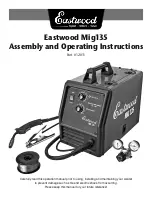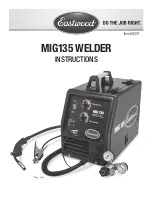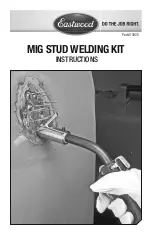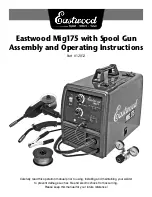
46 of 75
10.3.2 Wire Rope Replacement Criteria
If any cable is found to be in need of replacement, the entire cable
set, pulleys and safety rollers must be replaced immediately.
See
8.2.1
, cable conditions guide.
In the following table, "lay" means the distance
measured along a line parallel to the axis of the rope
in which the strand makes one complete turn about
the axis of the rope, or the wires make a complete
turn about the axis of the strand.
10.3.3 Wire Rope Inspection
Inspect wire rope cables for wear or damage. Wipe cables with a rag to detect hard to
see small broken or frayed cable strands. See chapter
8.2
,
Fig.15
and ANSI/ALI ALOIM
standard.
10.3.4 Wire Rope Lubrication
Lubricate wire ropes with lift in both lowered and raised position, by spraying them with
wire rope lubricant (i.e. NYROSTEN SEILOL).
10.3.5 Wire Rope Adjustment
Adjust cables if lifting is uneven or lift is not level (See chapter
6.10.3
). Never make
adjustments with weight on lift. If running out of adjustment threads, cables need to be
The wire rope must be removed from service if one or more of the following criteria are
met:
1.
More than six randomly distributed broken wires in one rope lay or 6
d length.
2.
More than three broken wires in one strand in one rope lay or 6
d length.
3.
Three or more broken wires at rope terminations.
4.
One outer wire broken at the point of contact with the core of the rope which has
worked its way out of the rope structure and protrudes or loops out from the rope
structure
5.
Heavy rusting, corrosion, or pitting. A light surface corrosion on outer wires is
normal.
6.
Wear or scraping of one-third of the original diameter of outside individual wires
7.
Excessive stretch. It is normal for new cable to require adjustment during “break-
in”, after which small periodic adjustments may be required. However, if a cable that has
been in service for 6 months should suddenly require frequent adjustments or has used
all the cable adjustment available, all cables must be replaced immediately.
8.
Deformed strands, kinking, crushing, birdcaging, or any other damage in
distortion of wire rope structure
9.
Variations in diameter (necking) or any change from normal appearance
10.
Reductions from nominal diameter of more than 1/32" (for cables 3/8" to 1/2" dia.
inclusive)
11.
End attachments cracked, deformed or worn
Содержание Hofmann ALIGNMENT FPA18210
Страница 8: ...8 of 75 SAVE THESE INSTRUCTIONS 2 1 SAFETY WARNING LABELS SAVE THESE INSTRUCTIONS...
Страница 13: ...13 of 75 6 1 TYPICAL BAY LAYOUT Figure 2 Typical Bay Layout...
Страница 15: ...15 of 75 Figure 3 Chalk line layout...
Страница 44: ...44 of 75 10 2 MAINTENANCE RECORDS Maintenance and Training Performed Date By Notes...
Страница 57: ...57 of 75 12 0 PARTS LIST 12 1 LIFT ASSEMBLY...
Страница 59: ...59 of 75 12 3 TOWER ASSEMBLY...
Страница 61: ...61 of 75 12 5 DECK ASSEMBLY LEFT SIDE...
Страница 63: ...63 of 75 12 7 CROSSMEMBER ASSEMBLY...
Страница 65: ...65 of 75 12 9 CYLINDER ASSEMBLY...
Страница 67: ...67 of 75 12 11 HYDRAULIC AND AIR KIT...
Страница 70: ...70 of 75 12 14CABLE ROUTING...
Страница 72: ...72 of 75 12 16POWER PACK ASSEMBLY...
















































